- Home
- Thomas Keneally
The Book of Science and Antiquities
The Book of Science and Antiquities Read online
Thank you for downloading this Simon & Schuster ebook.
Get a FREE ebook when you join our mailing list. Plus, get updates on new releases, deals, recommended reads, and more from Simon & Schuster. Click below to sign up and see terms and conditions.
CLICK HERE TO SIGN UP
Already a subscriber? Provide your email again so we can register this ebook and send you more of what you like to read. You will continue to receive exclusive offers in your inbox.
To my friend Jim Bowler, and to Mungo Man, 42,000 years old, who found each other on the shore of Lake Mungo in 1974
Author’s Note
I have said in the past that, given the many brilliant Aboriginal writers presently at work, it would be gross fraternal impoliteness for a white fellow to horn in on Aboriginal tales. Yet I hope I am forgiven for writing about 42,000-year-old (or older) Australian ancestors. This is because the Paleolithic humans from Lake Mungo speak of all our human ancestries, black or white—even though I believe the community at Lake Mungo lived a far more desirable existence than my own ancestors in Central Asia or Eastern Europe. Mungo Man, the novel’s Learned Man, is a treasure of three great surviving peoples, the three groups enumerated and, I hope, honored in the book. But in a secondary sense, and though our leaders are as yet indifferent to him, he is a possession of all humans, a phenomenal treasure, a prophet for us all.
I must thank again the amiable Professor Jim Bowler for his tolerance and vision, and a number of patient members of the New South Wales Department of Environment and Heritage who gave assistance with this book.
This book returns to the Horn of Africa, the scene of an earlier novel of mine, Towards Asmara. I wanted to assure anyone who by chance has read that earlier work that material from that long-ago book is not recycled here; that this tale makes use of journeys I made to Eritrea after 1989, the date of publication of Towards Asmara. The establishment of peace between Ethiopia and Eritrea in 2018 was good news for the noble citizens of both states. But Eritreans are still overrepresented in the boatloads of hapless people fleeing across the Mediterranean to Europe.
I would like to insist on the fictional nature of all the characters of this book, and though some of them were instigated by real people, the novel is not a roman à clef. The character Ted Castwell, for example, bears resemblance to the late visionary Fred Hollows, but is entirely fictional within the limits of this novel, as are all other characters, including Shelby Apple himself.
Two Old Men Dying offered my publishers significant editorial issues, given its two tales, parallel and yet individual. In resolving these, I owe much to my wonderful agent, Fiona Inglis, and to Nikki Christer, Meredith Curnow, and Karen Reid at Penguin Random House. As for my wife, Judith, I did not ask you when we first met whether, amongst your other notable merits, you were a good editor, but it turns out that you were, thus impelling once more my abundant gratitude.
I THE BOOK OF SCIENCE AND ANTIQUITIES
Finding Learned
AT THE TIME of the discovery of the astonishingly ancient Learned Man, some decades back, my friend Peter Jorgensen, a scientist from Melbourne, was testing dried lake basins and their sediments for records of ancient rainfall oscillations. In modern times this area is marginal country in terms of rainfall, and the Learned Lakes are dry these days. They are not lakes in the European sense, not lakes that assert their lake-ness by brimming and thus accommodating the eye. However, the lakes did hold water in the day of Learned Man, and accommodated his eye.
Ironically, twentieth-century heavy rain had kept Jorgensen bound to the homestead of the old Lake Learned Station on that historic day of his discovery. When the rain did stop and a brightening landscape and a firmer surface presented itself, Jorgensen set off on a motorcycle to investigate the sediments of the long lunette or semicircle of sand dunes and hills that marked the former eastern shore of the lake. After he abandoned the motorcycle and trudged up the hill, he walked over layers of the past, as exposed by millennia of winds and rain. He ascended from the eighty-thousand-year-old sediment level to the seventy-thousand-year-old layer and so on up to the fifty-thousand-year-old sediments. He was now not far from where, five years earlier, he had discovered the remains of a young Homo sapiens woman he’d dubbed Learned Woman, who had until that day represented the human who had the oldest formal burial we had knowledge of. Before her flesh was burned off her bones, it had been adorned with ocher, which the sediments around the bones of the woman were full of. This ocher did not come from the lake area but from hundreds of miles away. It had been deliberately applied in reverence to her. Her remaining bones had been broken up and even partially ground for whatever cause by her people. But her skull was still intact to assert her humanity.
Dating methods were in their infancy when Learned Woman was found in the early 1970s, and she was initially thought to have lived about thirty thousand years ago. However, there had been technical advances in subsequent decades: from thermoluminescence dating to electron-spin dating, uranium-thorium, carbon 14, and so on. Don’t ask me to explain any of them, or how they were applied to her. But they ultimately proved that Learned Woman had lived forty to forty-two millennia ago.
The young paleontologist who worked on Learned Woman’s remains and removed them to the Australian National University in suitcases was a friend of Jorgensen’s named Harry Spurling, who became well known because of his work on Learned Woman.
Though of course Jorgensen had suspected there must be other ancient remains in the vicinity of Learned Woman, he was not looking for them as he strode up the slope on the day of discovery, though he was willing to register them if they presented themselves. And thus he stopped when he saw what appeared to be a white disc shining through a mantle of clay and lightly cemented sand. Looking at it more closely, he saw that it was the side of a skull uncovered by the rain. Though Jorgensen did not know the skull’s gender on first sight, it would prove to be the remains of Learned Man.
Late afternoon, and one of the ancients had chosen to resurrect himself! Even as it happened it had the flavor for my friend of a willed meeting on both sides. Indeed, Jorgensen would come to believe what a female elder of the Barkindji people later told him: “You did not find the Old Woman and the Old Man. They found you!” Another elder observed, “The Old Man knew what he was doing. He showed himself to a man of science.”
* * *
I was already a documentary filmmaker of what could be called either note or notoriety when I met and became an admirer of Peter Jorgensen. I visited Lake Learned one year on a road trip and was captured by the vast dry lake of semidesert lushness and encountered the tale of Learned Man and the man who had found him. Jorgensen explained he was a geomorphologist when I first contacted him. That is, he was a researcher of what the earth looked like once, in ice ages past, and of how the rain fell on it, the ice shaped it, and long-gone waters occupied and honed it. Now, these are very technical issues and ones that stand aside from the question of humans and human action. We weren’t numerous then, and our species trod lightly upon the earth. We lacked the power and ambition to weigh upon it heavily. So the earth was still supreme when the rains Jorgensen was interested in fell. And Jorgensen, grandson of a Norwegian mariner who came ashore in Melbourne long ago for the sake of an Irishwoman, was a student of the supreme earth as it then existed, within its carapace of atmospheres and its veins of current and wind.
I felt too, for reasons that will become apparent, that in trying to make my film on Learned Man, I might lead Jorgensen to think me a chancer. I’d been depicted in that way because of the controversy over a documentary I’d made with my late friend Andy Mortray. That had made me edg
y enough to suspect I was mistrusted, which is why I was reluctant to ask my new acquaintance Jorgensen straight out, from the first hour of our filming at Lake Learned, whether it was all a matter of technical concepts for him; all a matter of the rainfall of, say, 43,757 Before the Present Era, and whether Learned Man was only of technical interest to him?
In order not to offend him, I first asked him the question off camera.
“Oh,” he told me, “I’m a familiar of Learned. No question. There are three men I dream of, Shelby. They visit me when I’m asleep.” The great scholar swallowed. “One is my drowned brother, Herk. He was strong, but sometimes I get nervous that he died to bequeath his strength to me.
“The other is my father, whose life was marred by a wound he suffered at Pozières on the Somme.”
Already the geomorphologist had confessed to a greater human sensibility than I had expected.
“The third,” he said, “is of course Learned himself.”
“So what does Learned Man tell you?” I asked glibly.
“Well, he says that to be human is to have business to attend to, to be on a quest. He was honored, you see, by those who buried him, as if he had been on a quest on their behalf. His people recognized what he’d tried to do, whatever it was. He says to me that we say we want an easy life, but without a pilgrimage, a dangerous search, we don’t live a life worth having. He tells me something a bit creepier too. He definitely says to me that being human is a test that kills us.”
“That’s a rather despairing idea,” I said, with the cinematographer’s everyday piety.
At this Peter Jorgensen smiled and said, “I don’t believe my friend Mr. Learned failed his test. He was buried like a hero, the first burial of a hero we have. But he tells me that not only do we face tests but there’s something in us that welcomes them. That’s the way we were in the time of Learned Man, and it’s the way we are now. At least I can tell you that everything the human brain was then, it is now. If you and I are poets and questioners, he was too. He prodded at the universe the way we prod at it. He felt overwhelmed by it, but had the human urge to encompass it. He chased love with the same sacred and profane mix of motives we do. At the end of it, he was you, Shelby.”
And so Learned Man was, according to Jorgensen, not a phantasm on the edge of the imagination, or a tepid taint of humanity over ancient terrestrial facts, but a personage of the present.
I was delighted to hear all this.
Then Jorgensen lowered his voice. “On top of that, Shelby, there is a white hyalite stone amongst Learned Man’s bones. What was it doing there? Maybe an emblem of authority. The stone comes from hundreds of miles away and is particular to Lightning Ridge up near the Queensland border.”
This was when I got the paleontology bug and began to make the first of my documentaries about Jorgensen, Learned Man and Woman, and the lakes region.
Learned Man stayed with me too, from the day I encountered him through Jorgensen, and in the end stayed with me longer than most things. He straddled time, and was the guessed-at past in an undiscovered future; the reconciling phenomenon between Australia’s geological antiquity and its societal juvenility. He hung suspended between the layers of our contradictions: Lake Learned had brimmed with water at the time Learned Man was there; it was his mare nostrum, his Mediterranean, his ministry, his dream, and his kindly shore. What must it have been to be human then, when to be human was so marginal an experience, a world in which we were not yet the dominating force but had mere elbow room amongst a wealth of other species?
Learned Arguments
WHEN HE FIRST encountered the remains he called Learned Man, Peter Jorgensen made note of the location and summoned Harry Spurling and another leading paleontologist. Spurling and his colleague excavated the site and took the remains back to a laboratory in Canberra for testing. Henceforth, the bones became the archaeologists’ business, since Jorgensen was not one of their company.
As clearly as Jorgensen sensed that Learned Man might have something revolutionary and explosive to say, so too did the leading paleontologist, Harry Spurling, who studied Learned Man as he had studied beforehand the female skeleton of shattered bones Jorgensen had found in the sand dunes.
Dating by radiocarbon testing in the 1970s being chancy, what Harry Spurling discovered with the skull of Learned Man, as earlier with that of Learned Woman, was that the measurement of its thickness indicated it was Homo sapiens, if an archaic version. None of this surprised Jorgensen, who had long believed Learned a brother of his, having decided the issue not on scientific grounds but for profound reasons of the heart, as Pascal had defined the heart when he said, “The heart has its reasons, which reason cannot grasp.”
Meanwhile, from studying Learned Man and other research, Spurling became renowned for questioning the “replacement” theory so commonly held by scientists. This theory posited that in Africa, and wherever Homo sapiens went from there, they replaced all other human strains. They did not make the other human species disappear by interbreeding with them. They were not their lovers on the savannahs of the past, but may have been their murderers, an uncomfortable but realistic possibility. Thus, according to the replacement theory, by the time Learned Man’s ancestors reached Australia, they were the only human species.
On the other hand, Harry Spurling was charmed by the elegant bones of Learned Woman, the young wife who had been cremated and whose fractured remains he chiseled forth with a dental drill from the ochered sand that adhered to them. And from her, and then from assembling Learned Man, Spurling decided on a new theory—that if Homo sapiens had not spread out of Africa until around two hundred thousand years before, there wasn’t time for them to have turned up where Learned Man and Learned Woman were encountered by Jorgensen. That, he declared, was one problem with the replacement theory and its idea of one mother, the Mitochondrial Eve from Africa, the woman whose line survived daughter by daughter by daughter—who made the modern human, her mitochondria snuggled in the cells of all her descendants. The woman who gave birth to Learned Man could not be a daughter of that one African mother, said Spurling, because there hadn’t been time for Learned’s mother to have got to Lake Learned if she came from the African Eve.
So, said Spurling, the story must be that modern Homo sapiens had developed in parallel in a number of places on earth, interbreeding with other human species on the way. Harry Spurling once said to me, “The replacement men and women say modern humans replaced Neanderthals without interbreeding. That’s what I don’t get. No interbreeding. Does that sound like the humans you know, Shelby?”
By then my first documentary on Learned Man had been screened on television to some acclaim via the normal route of the ABC, BBC, PBS, and I found myself attending archaeology and paleontology conferences, where people would ask me about Jorgensen and Spurling.
Though I knew Jorgensen had great affection for Spurling, nonetheless he had warned me, “Don’t spend too much film on Harry. I can tell you he’s wrong.”
“How can you tell?” I asked him.
He didn’t give me a scientific answer, but rather, “Learned Man didn’t go whoring after hominid women on the way to making us what we are. His ancestors entered a continent empty of other humans. Imagine this, because it’s what my friend Spurling imagines. Two different kinds of people came down from different places and settled near Lake Learned. One was from Java and was made up of hominids, and another had its roots in China, and were on their way to becoming us. The two parties were encamped and they began to crossbreed.” At this point he laughed indulgently. “That’s how Homo sapiens got to Australia, in Spurling’s view.”
Then he hastened to say, “I’ve got nothing against Harry. I recall him asking for a moment’s silence in honor of the first Australian after we excavated Learned Man. And he let only the wind speak then. His heart’s in the right place.”
Harry Spurling’s theory would indeed come to be disproved by advances in genetic science. He took it well; a
nd Jorgensen was not vainglorious when his fraternal instincts about Learned Man were proved right. Learned, it would be proved in time, was the child of our kind of humans, and no other hominids were in the vast Australia his ancestors had entered, and which he no doubt took for granted as the ordained place for him.
Learned Revised
BY THE TIME I made the second Learned film, we knew how long ago old Learned Man really had lived—a cool forty-two thousand years! And the three tribes whose land abutted Lake Learned knew that the remains of Learned Man and Learned Woman were treasures which had been taken from them. A number of Aboriginal elders from the towns of Mildura, Balranald, and Ivanhoe—speaking under the Anglo names their forebears had picked up from nineteenth-century sheep stations or missions—had made reasonable complaint that they had not been consulted by Jorgensen or Spurling or anyone else over the removal of their ancient forebears. It was the sort of mistake scholars had traditionally made, and Jorgensen was repentant but motivated to come to an arrangement with the elders, that there would be no more removals of their dead unless by permission.
I covered this compact as part of the second documentary.
Amongst other matters, I wondered about speech in Learned’s day. The organization of his burial seemed to have demanded that speech existed between the people who buried him. Though one brave commentator had granted ancient humans the capacity, as distinct from the communicating sounds of other apes a hundred thousand years before the present, there were those who cast doubt on the idea of speech being as ancient as the time of Learned Man.
Jorgensen and I were out in the sand dunes of the lake’s lunette again, the light fading on the site of Learned’s Paleolithic Manhattan, on the lake’s rumor of fullness, on the memory of the beasts of Learned’s time, and on the long, low undulations of the place, when Jorgensen said to me, “None of what was done at the burial was done by a pack of well-meaning primates with howls and groans.

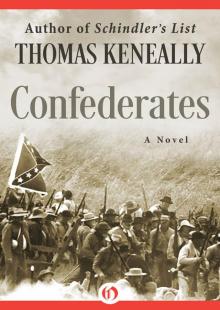 Confederates
Confederates Flying Hero Class
Flying Hero Class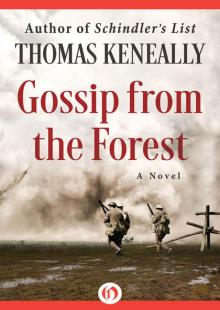 Gossip From the Forest
Gossip From the Forest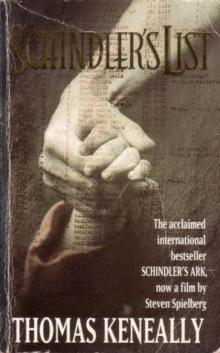 Schindler's List
Schindler's List Bring Larks and Heroes
Bring Larks and Heroes Australians: Flappers to Vietnam
Australians: Flappers to Vietnam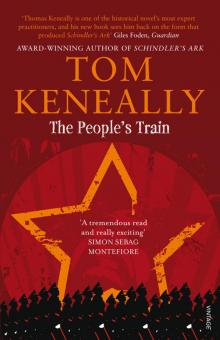 The People's Train
The People's Train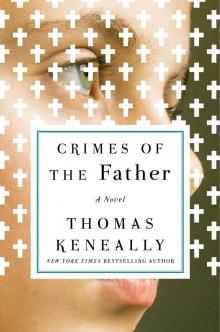 Crimes of the Father
Crimes of the Father A Family Madness
A Family Madness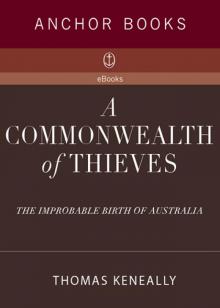 A Commonwealth of Thieves
A Commonwealth of Thieves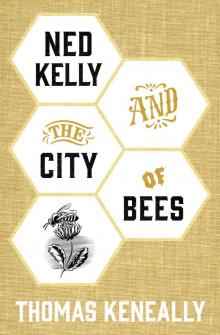 Ned Kelly and the City of Bees
Ned Kelly and the City of Bees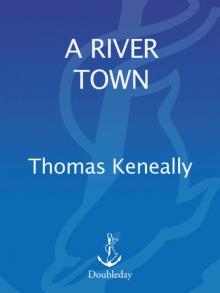 A River Town
A River Town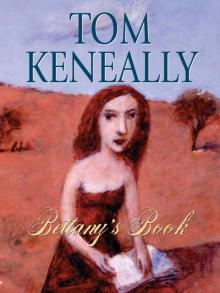 Bettany's Book
Bettany's Book Blood Red, Sister Rose: A Novel of the Maid of Orleans
Blood Red, Sister Rose: A Novel of the Maid of Orleans Victim of the Aurora
Victim of the Aurora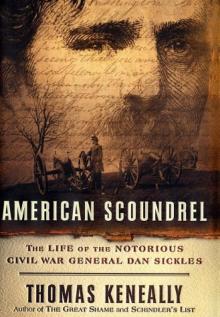 American Scoundrel American Scoundrel American Scoundrel
American Scoundrel American Scoundrel American Scoundrel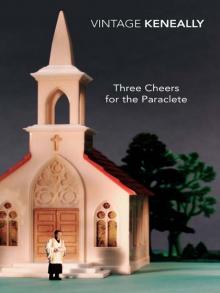 Three Cheers for the Paraclete
Three Cheers for the Paraclete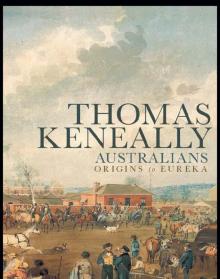 Australians: Origins to Eureka: 1
Australians: Origins to Eureka: 1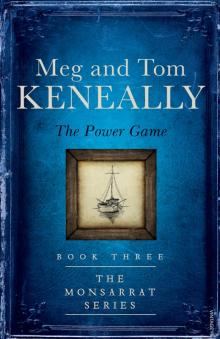 The Power Game
The Power Game The Chant Of Jimmie Blacksmith
The Chant Of Jimmie Blacksmith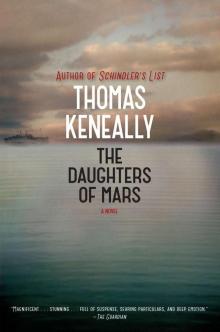 The Daughters of Mars
The Daughters of Mars Searching for Schindler
Searching for Schindler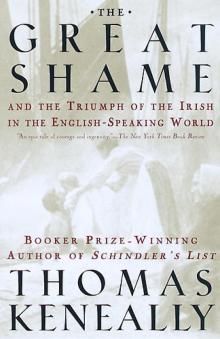 The Great Shame: And the Triumph of the Irish in the English-Speaking World
The Great Shame: And the Triumph of the Irish in the English-Speaking World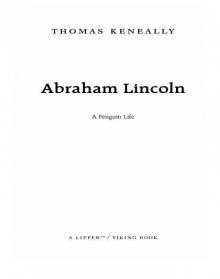 Abraham Lincoln
Abraham Lincoln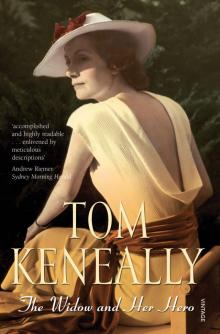 The Widow and Her Hero
The Widow and Her Hero Eureka to the Diggers
Eureka to the Diggers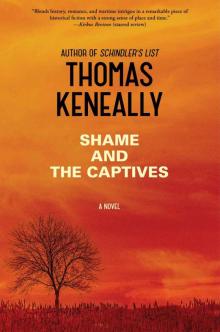 Shame and the Captives
Shame and the Captives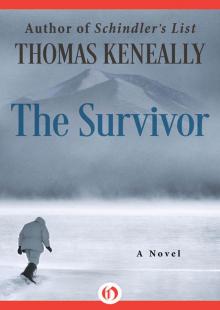 The Survivor
The Survivor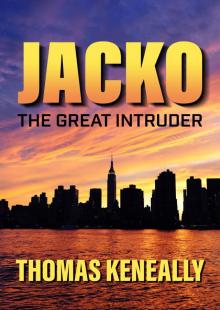 Jacko: The Great Intruder
Jacko: The Great Intruder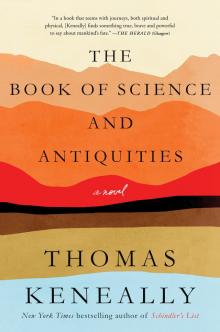 The Book of Science and Antiquities
The Book of Science and Antiquities Homebush Boy
Homebush Boy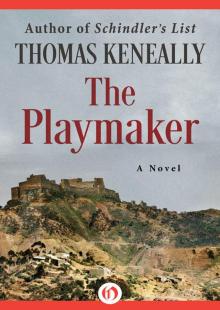 The Playmaker
The Playmaker To Asmara: A Novel of Africa
To Asmara: A Novel of Africa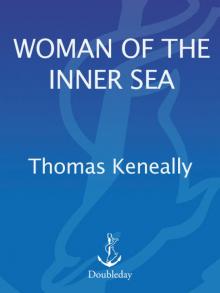 A Woman of the Inner Sea
A Woman of the Inner Sea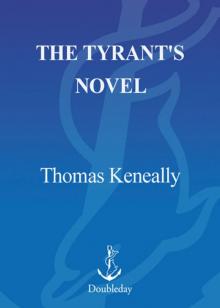 The Tyrant's Novel
The Tyrant's Novel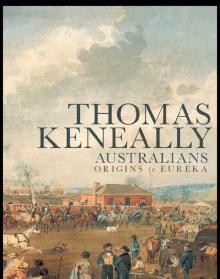 Australians
Australians Schindler's Ark
Schindler's Ark The Soldier's Curse
The Soldier's Curse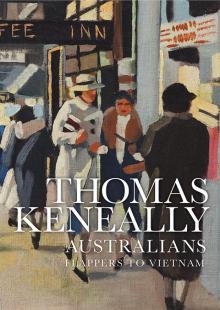 Australians, Volume 3
Australians, Volume 3 Blood Red, Sister Rose
Blood Red, Sister Rose A Victim of the Aurora
A Victim of the Aurora The Unmourned
The Unmourned Australians, Volume 2
Australians, Volume 2 To Asmara
To Asmara